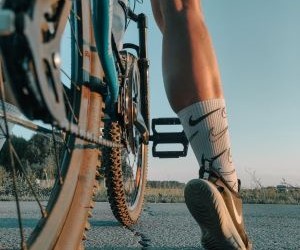Master endurance cycling in tropical climates with effective strategies. Learn hydration, heat adaptation, and training tips for peak performance.
HOW DO I PREVENT KNEE STRAIN WHILE CYCLING?
Cycling is one of the most rewarding ways to build fitness, explore the outdoors, and push performance—but knee strain can derail your progress quickly. Many riders, from weekend warriors to serious cyclists, experience discomfort that limits their training. The good news? Knee strain is often preventable with the right approach. By understanding how bike fit, pedaling technique, strength, and recovery all work together, you can reduce injury risk and ride longer with confidence. This guide dives deep into practical, data-driven strategies that blend science with real-world cycling experience.

Understanding the root causes of knee strain
Knee strain in cycling rarely happens overnight—it usually develops gradually due to repetitive stress and biomechanical imbalances. Cyclists often push through discomfort thinking it’s normal, but early intervention can prevent long-term injury. Understanding why knee strain happens is the first step toward prevention.
Common causes of knee strain
Several factors contribute to knee strain while cycling, and they often overlap. Incorrect bike fit, muscle imbalances, improper pedaling technique, and overtraining top the list. If these elements aren’t addressed, stress accumulates on the joint, leading to pain on the front, side, or back of the knee.
Poor saddle height or angle placing stress on patellar tendons.
Overuse from rapid mileage increases without proper adaptation.
Weak or tight surrounding muscles causing joint misalignment.
Incorrect cleat positioning altering natural knee tracking.
Why early awareness matters
Ignoring knee discomfort in cycling is like ignoring a slow leak in a tire—it only worsens over time. Addressing strain early not only prevents injury but also improves pedaling efficiency and overall performance. By identifying triggers, you create a foundation for a stronger and more sustainable riding career.
Optimizing bike fit and pedaling technique
Proper bike fit is arguably the most powerful tool to prevent knee strain. Small adjustments in saddle height, cleat alignment, and handlebar reach can significantly reduce joint stress. Many cyclists underestimate the impact of biomechanics, but even millimeter changes affect knee load during thousands of pedal strokes.
Bike fit essentials for knee health
A professional bike fitting session is a worthwhile investment for serious riders. Fitters use motion capture and pressure mapping to identify optimal adjustments. For self-adjustments, start with saddle height: too high overstretches hamstrings, too low overloads quads. Saddle setback, cleat rotation, and handlebar reach all contribute to healthy knee tracking.
Set saddle height so the knee maintains a slight bend at the bottom of the pedal stroke.
Adjust cleats to align with natural foot rotation.
Check saddle fore-aft position to avoid anterior or posterior knee strain.
Fine-tune handlebar reach to keep posture balanced and relaxed.
Mastering efficient pedaling
Smooth, circular pedaling distributes force evenly and reduces joint pressure. Riders often "mash" pedals with excess downward force, which amplifies strain on the knee joint. Practicing cadence drills, single-leg pedaling, and focusing on even power output builds neuromuscular efficiency. Over time, this translates into fewer injuries and better endurance.
Studies show maintaining a cadence between 85–95 RPM lowers joint stress compared to grinding at low cadence. Paired with proper gearing and pacing strategies, efficient pedaling protects the knees during long climbs and high-intensity efforts.
Strength, recovery, and sustainable strategies
Beyond the bike, building supportive strength and prioritizing recovery play crucial roles in knee health. Cycling primarily works the quadriceps, often leaving the hamstrings and glutes underdeveloped. This imbalance can destabilize the knee joint and increase injury risk. A well-rounded program addresses these weaknesses while improving resilience.
Strength training for cyclists
Incorporating strength exercises 2–3 times per week balances muscle activation. Squats, lunges, Romanian deadlifts, and hip bridges strengthen key stabilizers. Adding single-leg variations mimics cycling mechanics and helps correct asymmetries.
Weighted squats for quad and glute power.
Romanian deadlifts for hamstring strength.
Step-ups to train balance and unilateral stability.
Core planks and rotations for trunk stability.
Recovery and mobility
Recovery practices are as important as training. Dynamic stretching before rides, foam rolling post-ride, and consistent mobility work keep tissues supple. Adequate sleep and nutrition also accelerate tissue repair. Ice, compression sleeves, or professional physiotherapy can help manage flare-ups before they escalate.
Sustainable cycling habits
Long-term prevention comes from sustainable habits. Gradually increasing mileage by no more than 10% weekly, varying ride intensity, and respecting rest days allow the body to adapt. Smart gear choices, such as wider tires and lower gears for climbs, further reduce joint stress. By integrating these strategies, cyclists not only prevent knee strain but also improve performance longevity.
The takeaway: knee health is a long game. With proper fit, training, and recovery, cyclists can build resilience that lasts for decades of riding adventures.
YOU MAY ALSO BE INTERESTED






